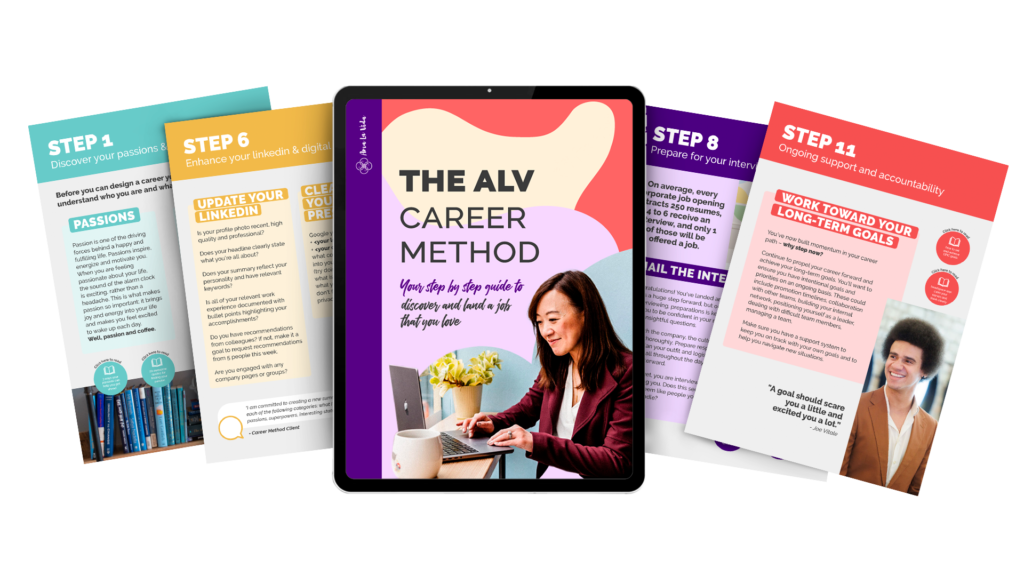5 easy steps for creating a career plan

So, you got the job. Hooray! Now you just need to do that job well and all your career dreams will come true. Right?
Or maybe you’ve been in your role for a while, working hard and doing all the “right” things. It’s only a matter of time before you’re whisked away to the management circle. Right?
Right? Well, not exactly.
Career journeys don’t end the minute you get inside a company’s doors (or remote servers). And hard work alone won’t necessarily translate to guaranteed career progression.
So what do you need to do to ensure your career path heads in the desired direction?
Why do you need a career plan?

Career paths aren’t magically generated gps outputs that determine the perfect roadmap to professional satisfaction and fulfillment. To achieve those things, you need a well thought out career plan.
Career planning shouldn’t be limited to job seekers or those just entering the workforce. It can be a powerful tool at any stage of your career, and can facilitate:
- Career exploration
- Evaluating career options
- Decision making
- Identifying potential employers
A clearly defined career plan empowers you to explore all possibilities and take action accordingly.
Ama La Vida’s Career Planning Process
Ama La Vida has created a career development process that utilizes a personalized approach for every career coaching client. The newly rolled out Blueprints™ function as a career planning process template and starting point for each coaching engagement.
From there, coaches work together with their clients to tailor the blueprint to the client’s unique needs, goals, and circumstances. Ama La Vida offers two distinct blueprint options:
The Career Transition Blueprint™
- For those who are thinking about, or are in the middle of, a career change
- Support you in clarifying short- and long-term goals
- Help you identify the direction of your next career move
The above process helps clients uncover exactly what they want and create a strategy to attain it.
The Career Growth Blueprint™
- For those looking to ensure their current job meets their needs
- Support you in developing your career vision and clear next steps
- Help you with creating opportunities for yourself and navigating future career decisions
The above process aids clients with optimizing their current role and maximizing future possibilities.
It’s not about one size fits all

These Coaching Blueprints are far from a one-size-fits-all approach! Ama La Vida’s coaches take this process and personalize it to each client’s needs, timeline, and priorities.
Whether you’re exploring new professional possibilities or navigating your existing career, next steps aren’t possible without a clear career vision.
Step 1: Create your career vision
Creating your career vision starts with self-exploration to identify what’s truly important to you. The first step in most coaching engagements is doing some deep values work. Your values are simply the things that are most important to you. Consider them your non-negotiables or your “North Stars.”
When it comes to an ideal career, you’re most likely to find satisfaction and fulfillment if the work you’re doing (and who you’re doing it for) is in direct alignment with your most cherished values. Remember, your career needs to support your life, and what’s truly important to you, and not the other way around.
In addition to focusing on what’s important to you, think about what interests you and where your strengths lie. Consider reflecting on the following:
- Which tasks and projects have I found myself most interested in and fulfilled by?
- Which industry, outside of my own, have I always been curious about?
- Which of my personal interests most engage me?
- What do I truly excel at?
- What type of help or support am I regularly sought out to provide at work?
Exploring your values, career interests, and strengths will help you determine what it is you actually want.
Step 2: Do your research

Once you know what you want, it’s time to explore some jobs or industries that might help you get it. But where do you start?
Free job boards can connect you with hundreds of open roles with minimal effort. Forbes recently compiled a list of the 10 Best Free Job Posting Sites of 2024. Use these sites to explore:
- Job openings—See which industries and companies are openly recruiting for talent, and are a match for what you’re looking for
- Job titles—Utilize keywords that align with the job titles you’re looking for in order to research the specific role & responsibility information that’s required for each job
Not sure where your skills and qualifications match up with what you’re looking to do? Do a deep dive on certification and training requirements for your desired position. Identify organizations that govern or oversee a particular industry or role to see what skill gaps you may need to close.
If you’re looking to get more information on an industry, company, or specific role, consider seeking out informational interviews. Identify folks within and outside of your network who have experience in these spaces and ask them for 15 minutes of their time so that you can ask questions.
Know someone who knows someone? Ask for an introduction! A half-opened door is even more likely to get you time on someone’s calendar.
Part of the research and exploration process should include whether or not the possibilities you’ve uncovered are actually a good fit for you. It’s not just about what you can do, it’s about what you want to do.
One way to do this is through career assessments and self-assessments. There are several assessments available in the marketplace that measure strengths, working styles and preferences, personality types, and more. Utilize these resources to suss out where you might excel or struggle, and where your talents and skills may be best suited.
Be prepared for some deep introspection and perhaps even a reality check! You might be going into this research with a narrow vision of what’s tangible and attainable; keep an open mind and allow yourself to embrace your findings.
Step 3: Set your career goals
A big part of the career planning process involves setting clear and actionable goals for yourself. When coming up with your professional goals, consider the EPIC goals model:
- Elevating – They’re motivational and inspiring—connected to your “Why”
- Practical – They’re reasonable and achievable—even if they are stretch goals!
- Impactful – They’re meaningful and life changing—bring you closer to your career vision
- Clear – They’re definable and measurable—establish metrics and deadlines
Some reflection questions to consider when setting career goals:
- Which career options and paths, although realistic and attainable, am I simply not interested in?
- Which would require additional education or training in order to be attainable?
- Which of my leadership and technical skills am I looking to maximize within my career role?
Remember that your career goals are YOURS, and should be reflective of the things that you want to achieve and do not need to align with a “typical” trajectory within your career field.
Step 4: Turn your career goals into a career action plan
Now that you’ve established your career goals it’s time to take action! First, consider what career plan steps are necessary and which order makes the most sense for you.
Thinking chronologically, a good first step might be to break things down by short-term goals and long-term goals. But, there are many ways to structure a career action plan.
Planning a career change and need additional education or to learn new skills? Your first step might be to:
- Enroll in an in-person or virtual class that will help you develop the skills you need
- Research what internships might be available at companies within your new desired career field
- Look for entry level positions that might provide you with on-the-job training
Looking to change jobs but remain in your current industry or career field? Your first step might be to:
- Update your resume and cover letters
- Work on your LinkedIn profile and get more active on the platform
- Let your professional network know that you’re looking to make a move and see who can support you in your job search

Happy in your current role but looking to build up your leadership skills and presence? Your first step might be to:
- Consider what leadership development training and/or coaching resources are available to you
- Look into joining professional associations that are aligned with your current industry or role
Remember, any first step in an action step!
Step 5: Check in on your progress
An important step in working your career development plan is to revisit it regularly to evaluate your progression. Seeing what you’ve already achieved is a tremendous motivator!
Revisiting your plan also allows you the opportunity to make changes to it. A good career plan won’t remain static, and should morph as your goals, priorities, and desired accomplishments change over time.
Your career plan is a resource tool, not a binding agreement. It’s meant to be a fluid document that works for you and your needs at any given time.
Start Planning!
The benefits of a comprehensive and workable career plan are immeasurable, but it can be a daunting undertaking. You don’t have to go it alone!
Consider partnering with a coach to help you flesh out each step of your career plan, AND get the support you need as you work your plan.
Use this link to book a free consult to get matched with an Ama La Vida coach!








